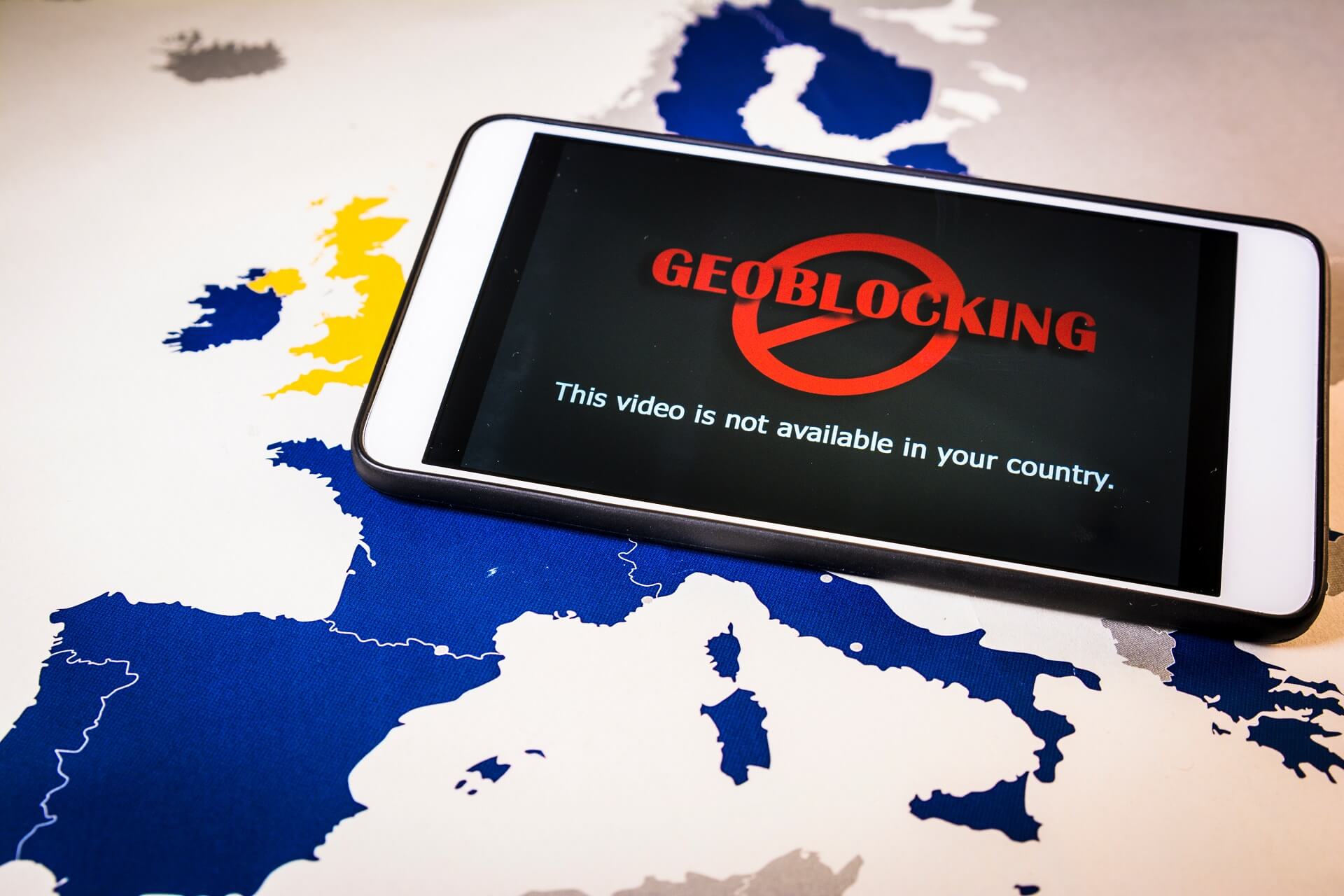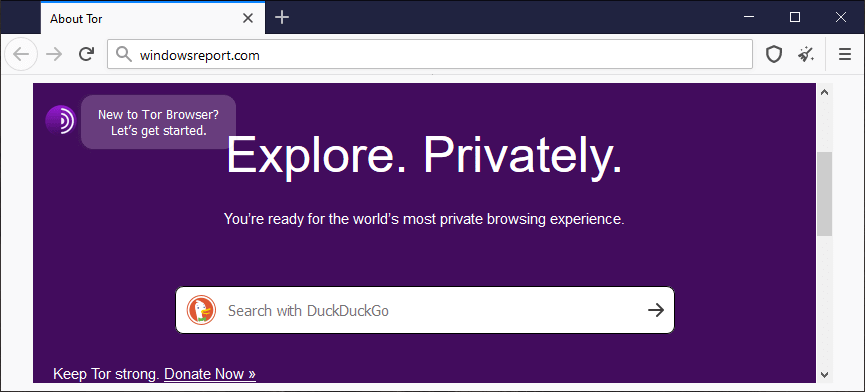Geoblock: How to Circumvent Geoblocking?
- Unfortunately, some online services are restricted to a select few countries.
- This is known as geo-blocking and is one of the most important restriction methods.
- On the bright side, there are a few tricks that can help you dodge geoblocking in a jiffy.
- Check out our guide and learn how you can circumvent geo-restrictions like a pro.

Sometimes, certain online services might become restricted to a select few countries. This usually happens with experimental services or products that need to gauge their popularity internally before hitting the large market.
However, if it’s popular enough, word of its existence might slip past the boundaries of said country. Outsiders might want in on some of the action, but since the geographical restrictions are in place, there seems to be no way to reach it.
What is geoblocking?
Geoblocking is the practice of forbidding users that live in certain countries from accessing a product or a service. Geoblocking can work by whitelisting the regions that are granted access, or in more delicate cases, blacklisting specific countries from even attempting to access the product.
Regardless of restriction mode, geo-restricted content can feel quite much like the forbidden fruit. Much so that people devised various ways to bypass it. Some providers have even started banning users who would even attempt to circumvent geo-restrictions.
The most foolproof method would be physically relocating to one of the regions where the service is available. But since that’s not a viable option any longer, we’ll shift our focus on some stay-at-home methods.
In the following sections, we will explain a few ways that you can bypass geo-restrictions without significant efforts.
How to bypass geoblocking
1. Use a VPN
- Download Private Internet Access
- Install it on your PC
- Launch it
- Select a server in the location you’re interested in
- Access the geo-restricted content
Private Internet Access is a reliable VPN service provided to you by Kape Technologies. It can help you bypass geographical restrictions in a few moments and without significant effort.

Private Internet Access
Is your favorite service/product unavailable in your region? Try PIA to bypass geo-restrictions.You just launch it and choose a server that’s located someplace convenient (choose a US server if you want to watch US Netflix). It’s that easy. Even if the server you chose doesn’t seem to work, you can easily disconnect from it and try another one.
2. Use a Proxy
Since the uprising of VPNs and other similar services, proxy servers have lost a bunch of their former popularity. They’re not exactly secure since they don’t encrypt any Internet traffic data.
The only thing a proxy server is good at is masking your IP address. Furthermore, if you’re behind a proxy server and use HTTP connections, the owner of the proxy can see your real IP address. Not good, right?
Also, a lot of service providers (yes, the ones who are geoblocking everything) can easily detect proxy traffic and block it.
The final nail in proxy’s metaphorical coffin is low speed. Most, if not all proxy servers have limited bandwidth, so they can accommodate a larger customer beach.
Thus, users’ connection speed gets quite a hit due to the large number of users combined with the bandwidth restrictions.
So maybe don’t use a proxy. Most definitely don’t invest in one. It’s quite outdated and most service providers will probably figure it out and block you anyway.
3. Use a Smart DNS
If you don’t care much about security and online privacy, you can opt for a Smart DNS. This type of service is quite frankly the best way to access geo-restricted content.
Unlike VPN services, using a Smart DNS doesn’t encrypt any of your traffic. Although you can use a VPN without encryption sometimes, it’s not recommended. But a Smart DNS solution is built differently.
Thus, you can access geo-restricted content, but your traffic data is pretty much exposed. On the other hand, the lack of encryption also means that your Internet speed won’t (or shouldn’t) drop even one bit.
The way this type of service works is by replacing your true DNS with another one that’s bound with a valid region. Let’s say, for instance, that you’re located in Germany and want to see USA Netflix. Obviously, you can’t do it all by yourself.
In this situation, a Smart DNS would replace your original DNS with USA-approved ones. That way, Netflix would think that you’re in fact on American soil. Thus, you’ll be able to enjoy US Netflix in no time.
Additionally, any connection requests are automatically intercepted by the Smart DNS and any data that would reveal your real location is stripped from the requests and replaced with spoofed information.
4. Use Tor
Tor, which stands for The Onion Router, is a popular free service that can hide your IP. However, it faced a series of challenges in the last few years, mostly due to the fact that Tor is used to access hidden web services, which are subsequently used to distribute illegal content.
However, in its essence, Tor is a service that can anonymize your online identity by hiding your IP address and routing your traffic through several relays. These relays are actually nodes hosted by other Tor users, all around the world.
This service might seem like a great way to unblock geo-restricted content. However, its relays can be very easily blocked by ISPs, and the speed will be downright awful. You’d be lucky to reach a full MB on sunny days, so you might want to reconsider.
You can get around geoblocking easily with the right tools
Geoblocking, geo-blocking, or geo-blocking, call it what you may; its endgame is still the same. A bunch of content you might be interested in is not available in your region and without the right tools, there’s pretty much nothing you can do about it.
Fortunately, you can bypass geo-blocking by using the methods we’ve listed above. Some are free at the expense of speed, others provide you excellent geo-unblocking but do nothing for your security, so ultimately it’s a matter of choice.
We strongly believe that using a VPN to bypass geo-restrictions is definitely the best all-round solution that boasts great speed, security, privacy, and overall reliability.






